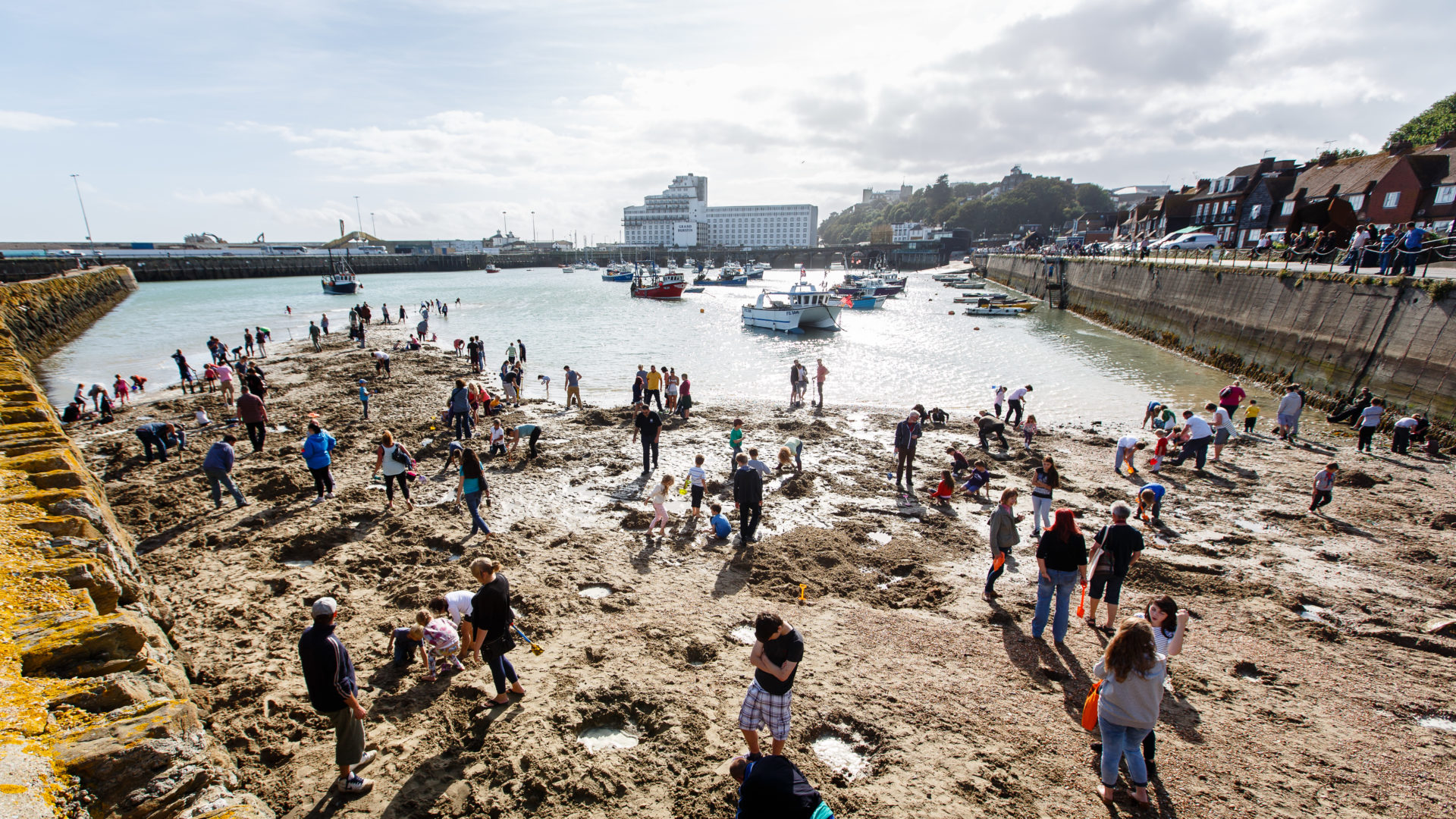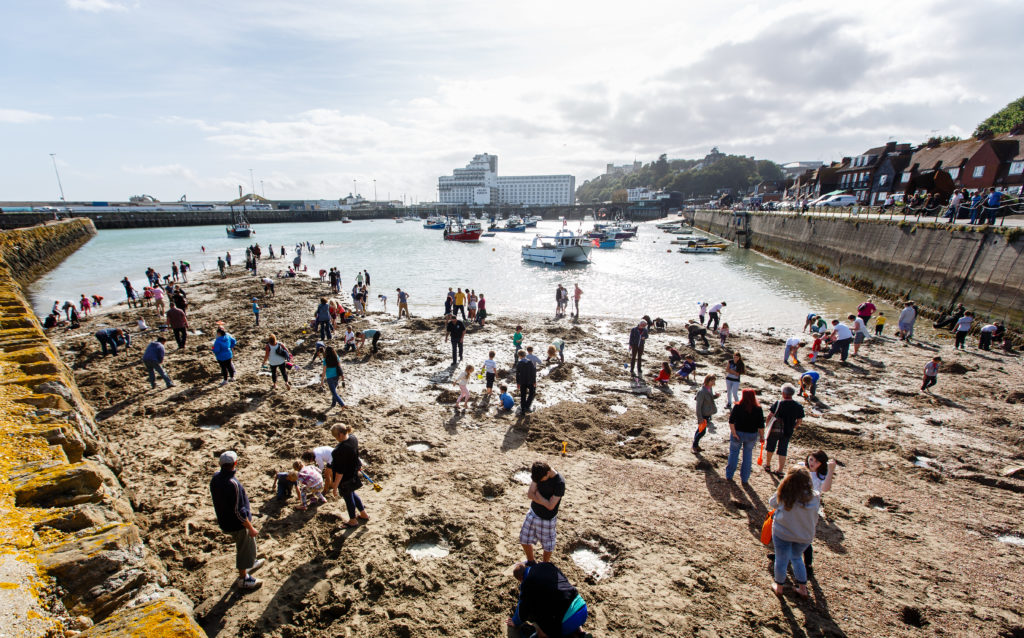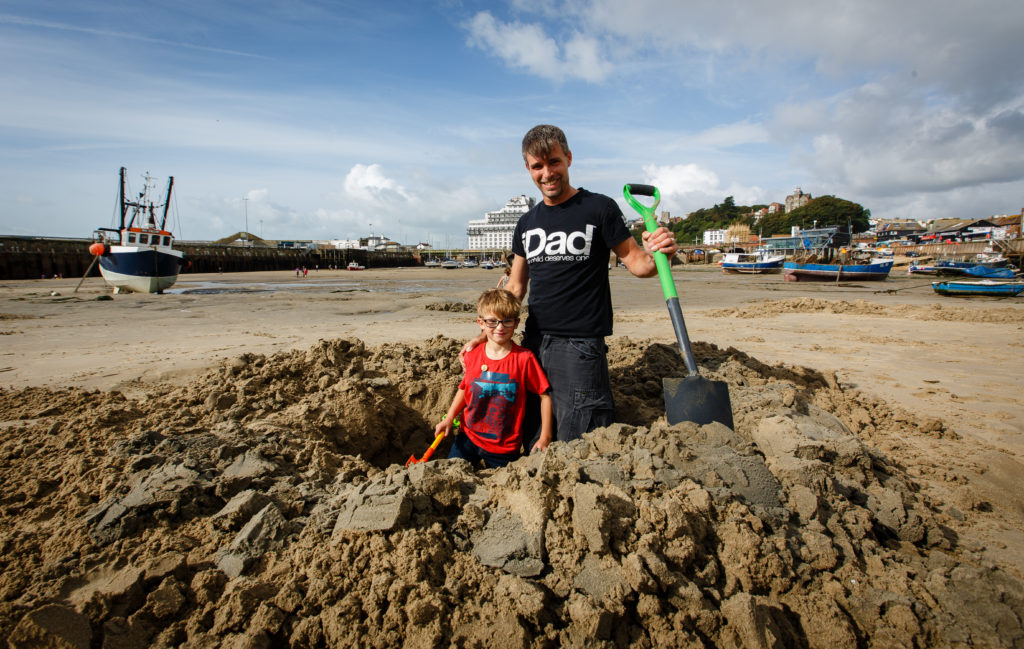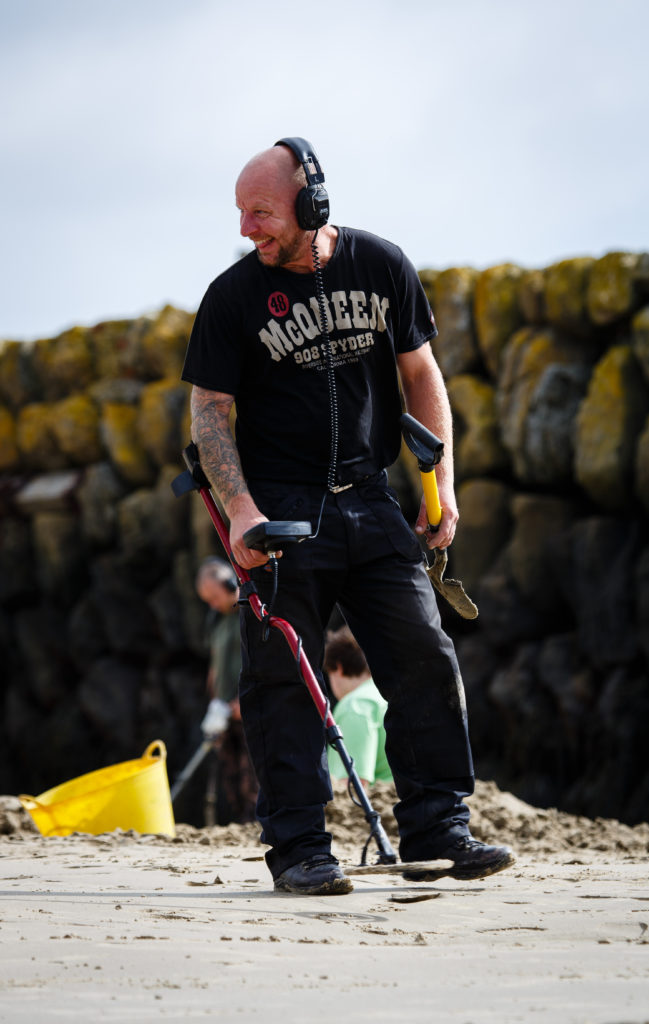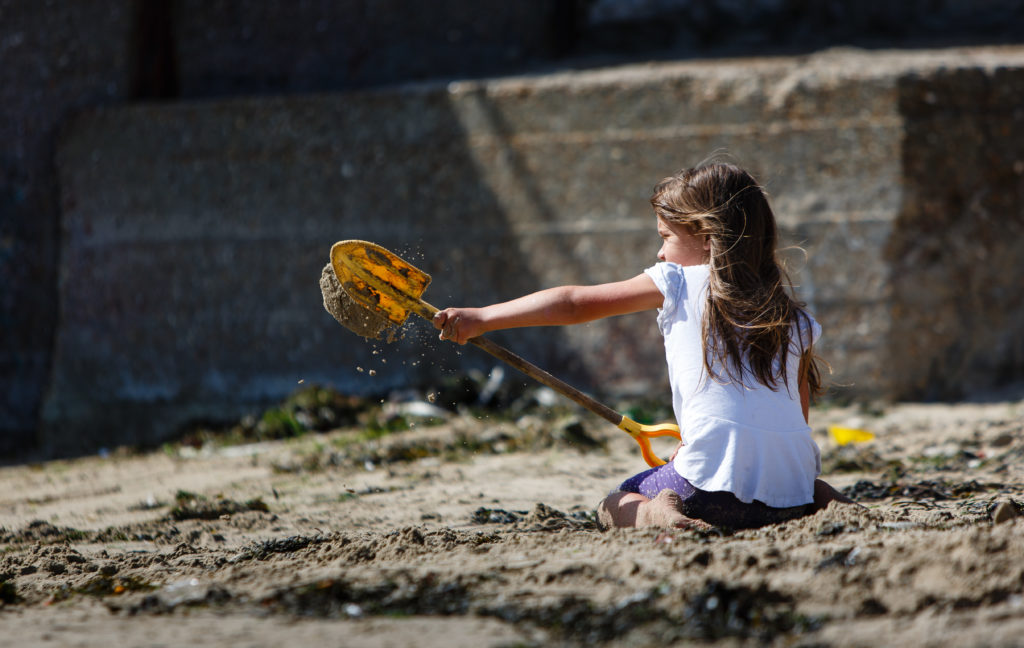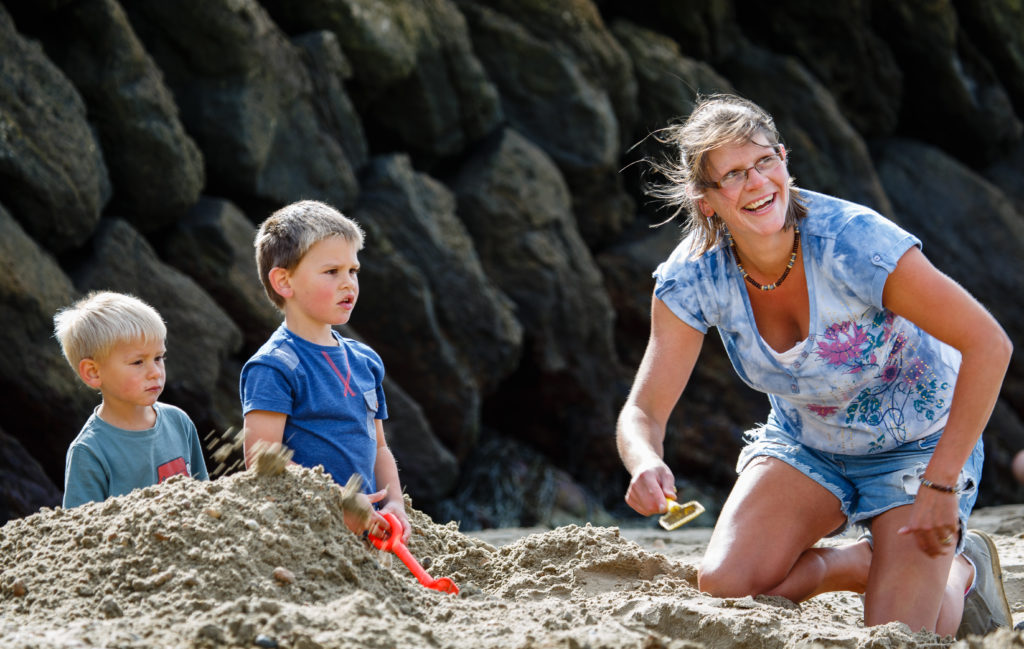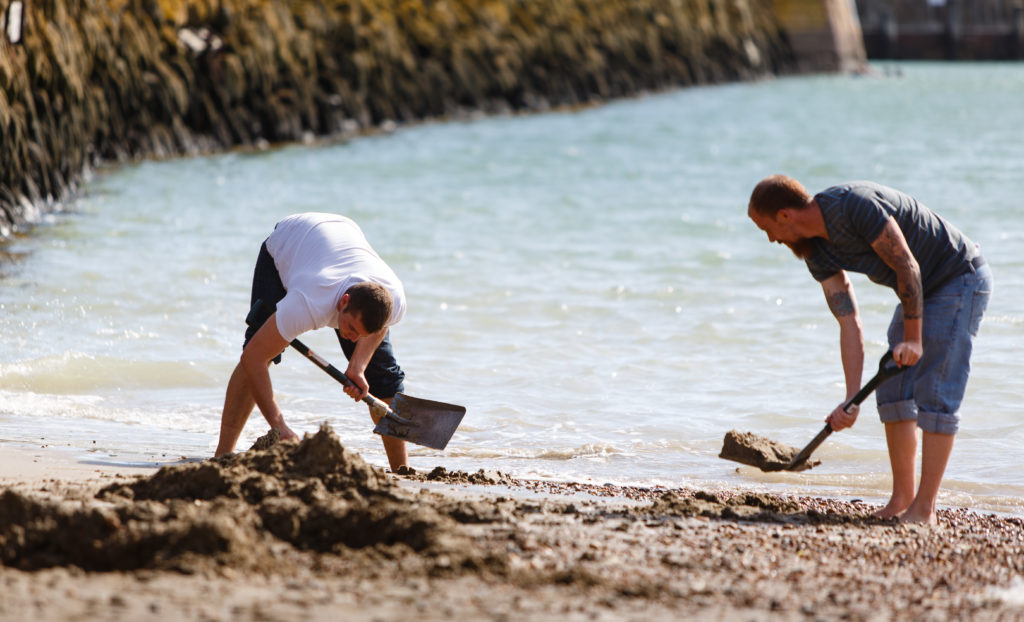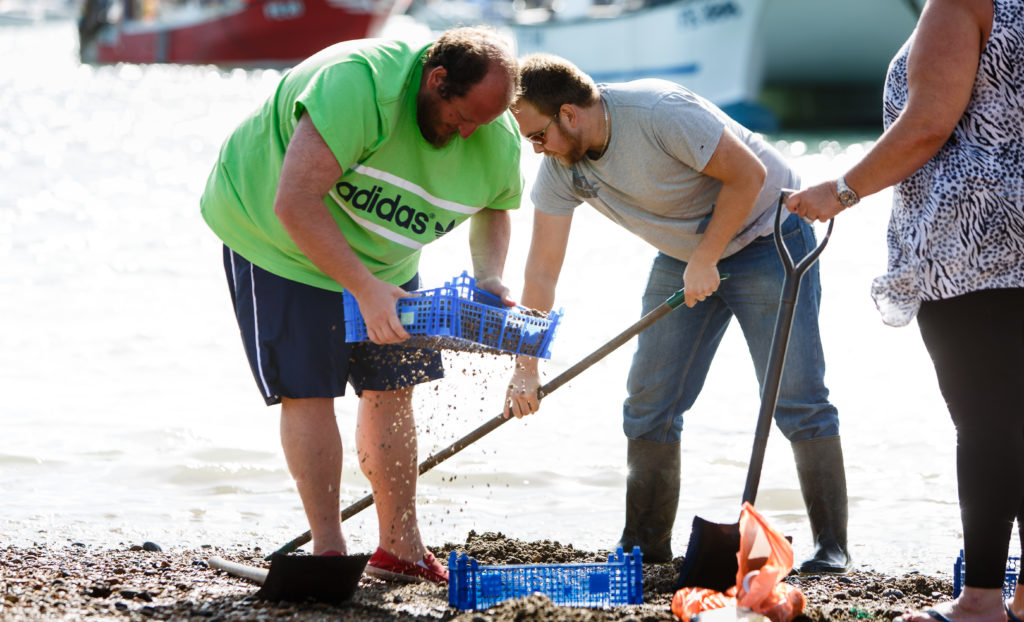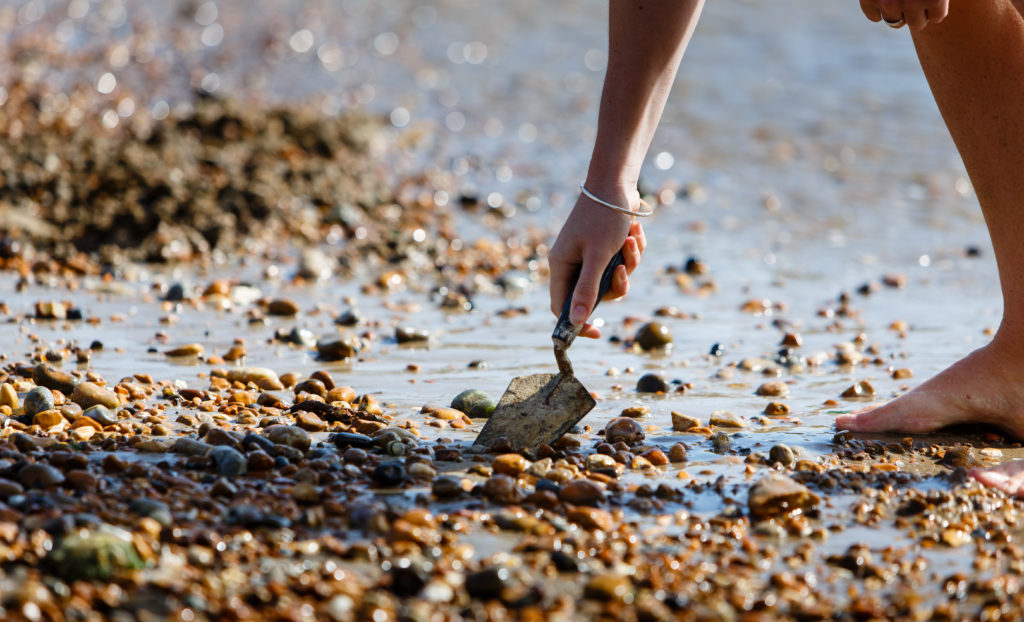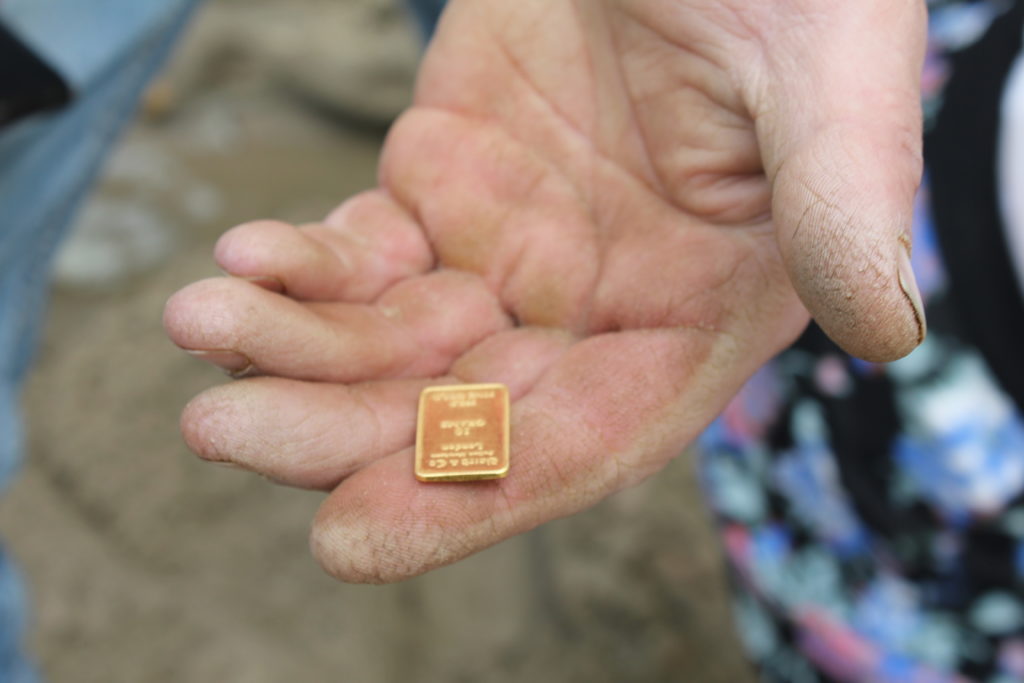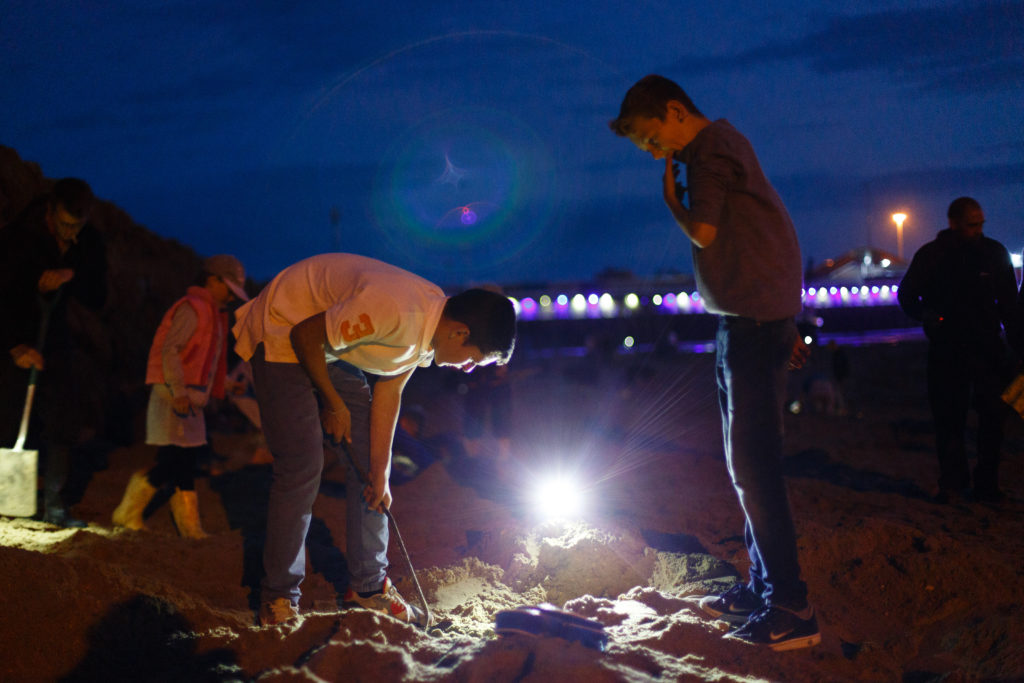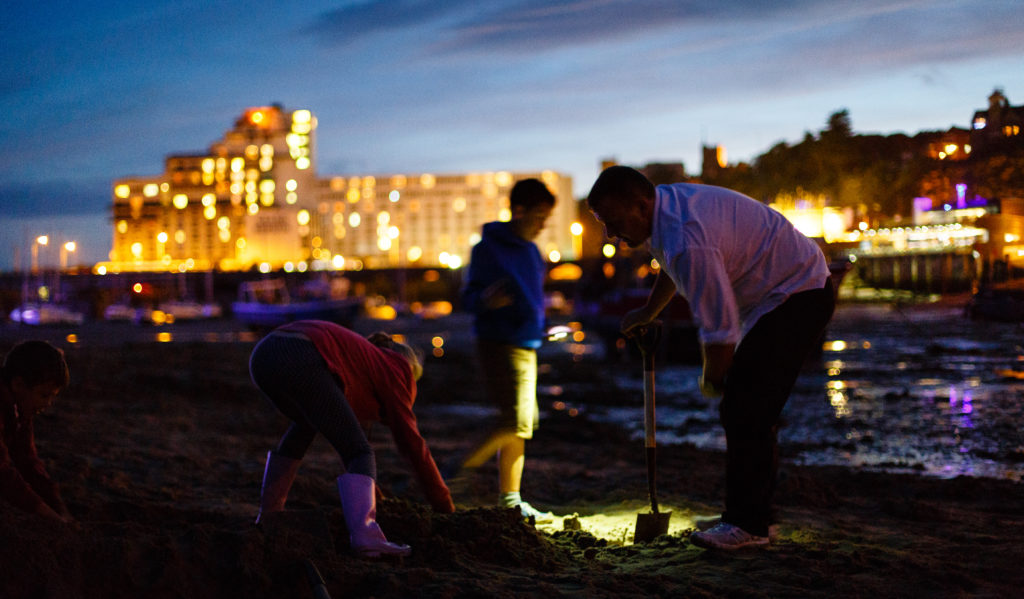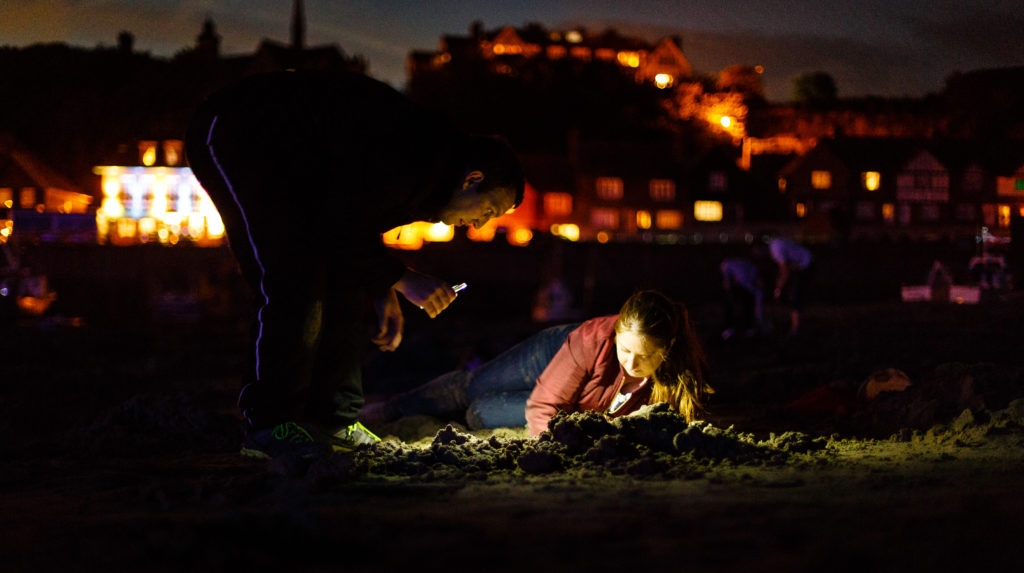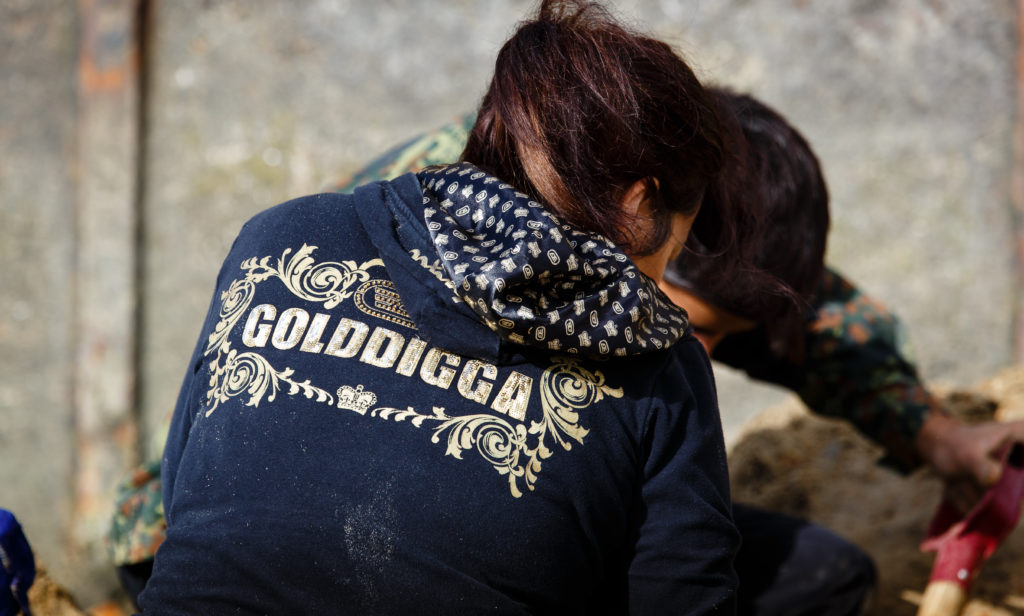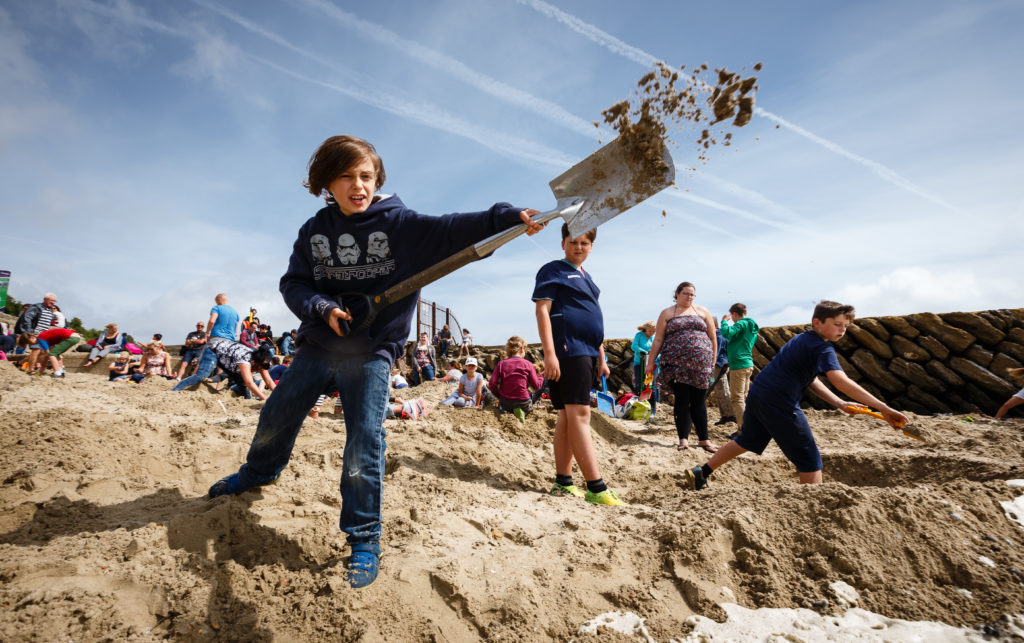On 29th August, £10,000 of gold bullion was buried under the sand of the harbour beach in Folkestone. On the morning of 30th August, it was announced to the press.
From 30 August 2014.
Folkestone Triennial 30 August to 2 November 2014.
‘The artist has turned Folkestone beach into Treasure Island, which is an innocent enough conceit. The quest for gold has an almost metaphysical allure, as does the idea that art can actually deliver some transcendent reward. Like digging for gold, you have to work at art to get anything from it.’ The Guardian
Situations invited Berlin-based Michael Sailstorfer to conceive of a project for Folkestone Triennial 2014, which would respond to the particularities of the English coastal town and former port.
From 30th August, hundreds of people descended on a small stretch of normally quiet beach in Folkestone, Kent, spades and trowels in hand. Creating mounds of wet sand, every once in a while people would gather around someone proudly holding up a small gold bar.
Following a year of secrecy over Situations’ project in the Triennial, Michael Sailstorfer’s Folkestone Digs began with a press announcement, which simply stated that 30 pieces of gold worth £10,000 had been buried under the sand of the harbour beach of a Kentish coastal town. The ensuing hunt for gold involved hundreds who had travelled from across the UK, with the story being reported across global news channel.
The beach, which becomes partly covered at high tide, is open to the public. Visitors to the beach were invited to dig for the gold, or to watch the hunt unfold. Successful treasure-hunters were entitled to keep their gold. Each piece is worth between £300 and £450. The Folkestone Digs attracted widespread media attention: ITV breakfast, BBC news and Chinese state television broadcast live from Folkestone. There were over 119 articles in national and international media, 14 television and radio stories and over 200 online articles, amassing more than 1.6bn hits.
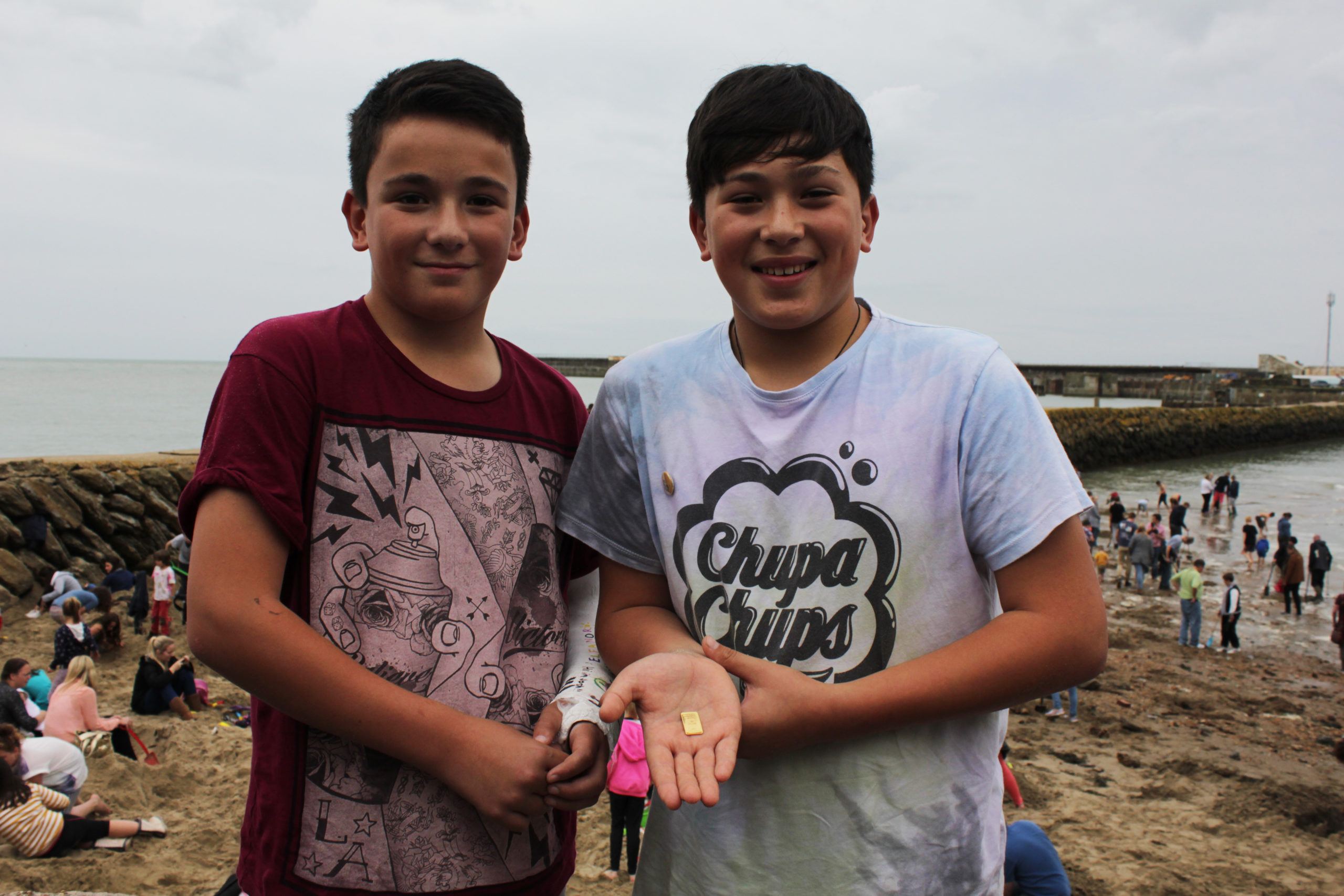
The mass digging of the beach also created its own piece of land art, with craters, hills and holes, washed away when the tide comes in. The next day, the day’s diggers create a new piece of art. Families spent days in the sunshine, digging and playing in the sand and new friendships were made.
Years on, a crucial element of this artwork is that there may still be gold bars under Folkestone Beach. The gold has been moved every day, twice a day, by the ebb and flow of the tide. Whether gold finders keep their gold, as a piece of art which may gain value over the years, or sell it for money, is another element of the work. We will never know if all of the gold has been found, so people might still be digging in that sand in 50 years time.

About the artist
Born in 1979, Michael Sailstorfer lives and works in Berlin. Though the artist’s range of artistic processes spans highly elaborate productions to near-imperceptible interventions, a common factor across his work is the disruption of the everyday.
Previous works have included painstakingly collecting fallen autumn leaves, painting and refastening them back onto the tree to simulate a premature spring and enacting a process of ‘cabin cannibalism,’ feeding the rotting wooden walls of a small chalet to the woodburner.
Audio guide to Folkestone Digs
Resources
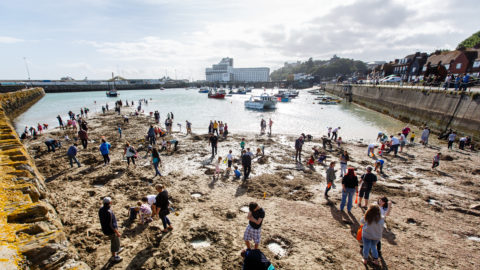
Folkestone Digs press release
Press release that announced Folkestone Digs
ViewLinks
Credits
Folkestone Digs was commissioned and funded by the Folkestone Triennial.


